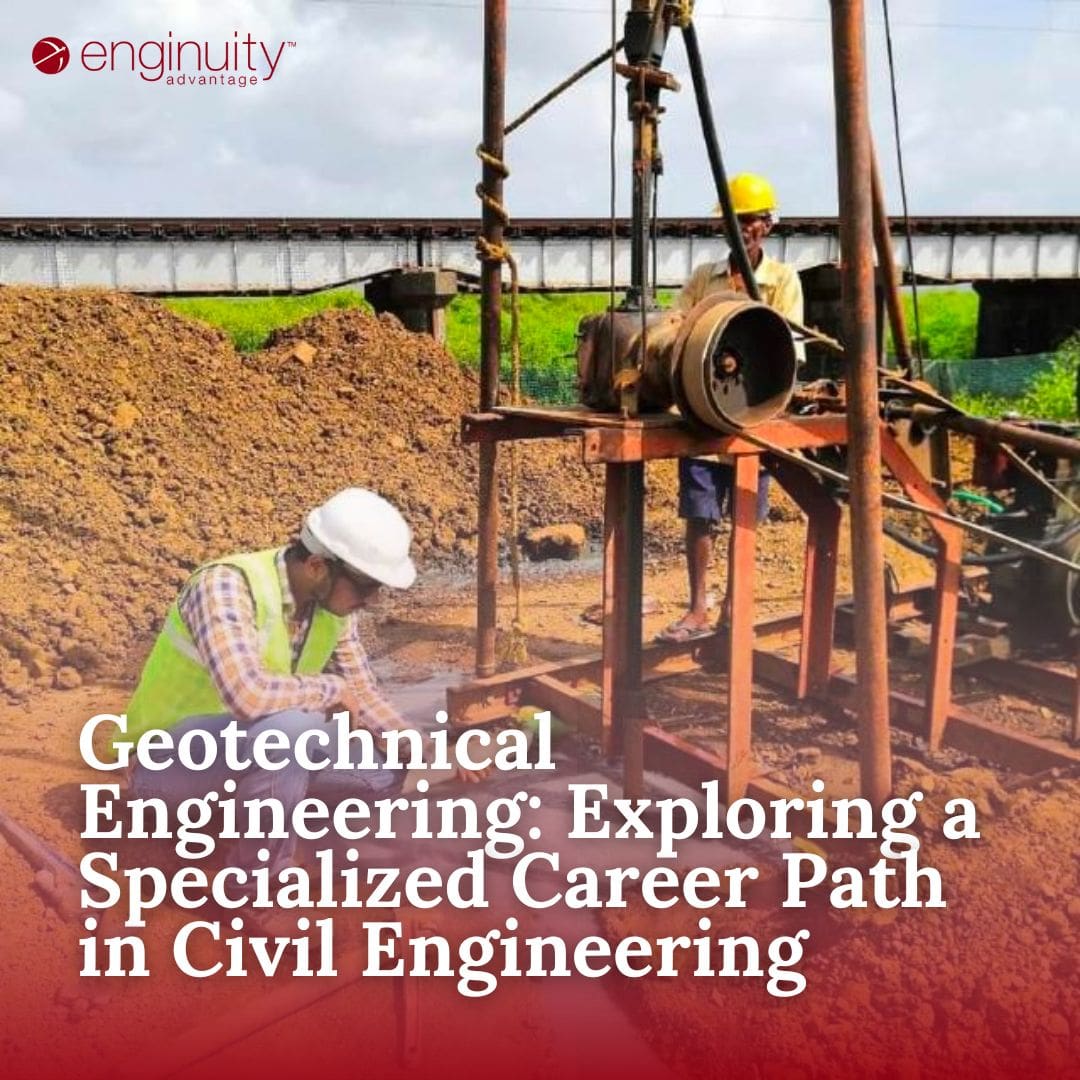Unknown Facts About Geotheta
Unknown Facts About Geotheta
Blog Article
Rumored Buzz on Geotheta
Table of ContentsHow Geotheta can Save You Time, Stress, and Money.The Ultimate Guide To GeothetaGeotheta Can Be Fun For AnyoneA Biased View of GeothetaFacts About Geotheta Uncovered

They perform website examinations, collect samples, do research laboratory examinations, and analyze data to evaluate the suitability of the ground for building tasks - Geo Tech Engineer. Based upon their findings, geotechnical designers provide suggestions for structure style, incline security, preserving structures, and mitigation of geotechnical risks. They team up with various other specialists, such as architects, architectural designers, and construction teams, to guarantee that geotechnical considerations are integrated into the overall job style and application
By examining the habits and buildings of dirt and rock, they can recognize possible geotechnical risks such as landslides, soil settlement, or incline instability. Their proficiency helps prevent failures or mishaps that might endanger lives and residential property. Right here are some comprehensive tasks and duties of a geotechnical designer: Site Investigation: Geotechnical designers conduct site examinations to collect information on subsurface conditions.
They analyze the information to comprehend the buildings and actions of the dirt and rock, including their strength, leaks in the structure, compaction characteristics, and groundwater conditions. Geotechnical Analysis and Design: Geotechnical designers analyze the information accumulated throughout website examinations to examine the security and suitability of the site for construction projects. They execute geotechnical estimations and modeling to review variables such as bearing ability, settlement, slope security, side earth pressures, and groundwater circulation.
Not known Factual Statements About Geotheta
Structure Design: Geotechnical engineers play an important function in creating structures that can securely support the designated structure. They analyze the soil problems and load needs to figure out the suitable structure type, such as superficial foundations (e.g., grounds), deep foundations (e.g (https://www.avitop.com/cs/members/geotheta.aspx)., heaps), or specialized strategies like dirt enhancement. They think about aspects such as settlement restrictions, birthing capability, and soil-structure interaction to develop optimum structure styles
They review building and construction strategies, monitor website activities, and conduct area examinations to validate that the layout suggestions are complied with. If unexpected geotechnical concerns develop, they analyze the situation and give suggestions for remediation or adjustments to the design. Threat Evaluation and Reduction: Geotechnical engineers analyze geotechnical dangers and risks connected with the project website, such as landslides, liquefaction, or soil disintegration.

Cooperation and Interaction: Geotechnical engineers function carefully with other specialists associated with a project, such as designers, architectural designers, and building and construction groups. Effective interaction and partnership are important to integrate geotechnical factors to consider right into the total job layout and building and construction process. Geotechnical engineers give technical proficiency, solution queries, and make sure that geotechnical requirements are satisfied.
Rumored Buzz on Geotheta
Below are some types of geotechnical engineers: Structure Designer: Structure designers specialize in developing and assessing structures for frameworks. They assess the soil conditions, lots demands, and website characteristics to identify the most suitable foundation kind and style, such as shallow structures, deep foundations, or specialized techniques like pile foundations.
They assess the aspects affecting incline security, such as dirt homes, groundwater conditions, and slope geometry, and establish methods to prevent slope failings and mitigate threats. Quake Designer: Quake designers specialize in analyzing and designing frameworks to stand up to seismic forces. They examine the seismic danger of a site, examine soil liquefaction potential, and create seismic layout requirements to ensure the security and resilience of frameworks throughout quakes.
They do field testing, accumulate samples, and examine the collected data to characterize the dirt homes, geologic formations, and groundwater problems at a click over here now website. Geotechnical Instrumentation Engineer: Geotechnical instrumentation engineers concentrate on tracking and measuring the actions of dirt, rock, and structures. They install and keep instrumentation systems that keep an eye on elements such as dirt settlement, groundwater degrees, slope movements, and architectural displacements to analyze efficiency and provide very early cautions of possible issues.
See This Report about Geotheta
They perform tests such as triaxial examinations, debt consolidation tests, direct shear examinations, and leaks in the structure tests to collect information for geotechnical analysis and style. Geosynthetics Designer: Geosynthetics designers specialize in the style and application of geosynthetic products, such as geotextiles, geogrids, and geomembranes. They make use of these products to enhance dirt stability, reinforce inclines, give drainage options, and control disintegration.
They have a tendency to be investigatory people, which implies they're intellectual, introspective, and analytical. They are interested, systematic, rational, analytical, and rational. Several of them are additionally social, meaning they're kind, charitable, participating, client, caring, handy, empathetic, tactful, and friendly. Does this seem like you? Take our totally free occupation examination to figure out if geotechnical designer is just one of your leading occupation suits.
In the office atmosphere, geotechnical engineers utilize specialized software devices to execute estimations, create layouts, and evaluate data. They prepare records, evaluation project requirements, interact with clients and team members, and coordinate project activities. The workplace setup gives a favorable environment for research study, analysis, and cooperation with various other specialists entailed in the project.
Geotheta for Beginners
They frequently see job websites to perform site examinations, assess geotechnical problems, and gather information for analysis. These check outs include taking a trip to various locations, often in remote or challenging terrains. Geotechnical designers may carry out dirt tasting, conduct tests, and screen building and construction activities to make sure that the geotechnical aspects of the project are being carried out correctly.
Geotechnical designers additionally operate in specialized geotechnical labs. In these centers, they conduct experiments, carry out examinations on dirt and rock samples, and examine the design homes of the products. Geotechnical laboratory engineers work thoroughly in these atmospheres, taking care of testing equipment, operating instruments, and tape-recording information. They work together with other research laboratory staff to guarantee precise and reputable screening outcomes.
Report this page